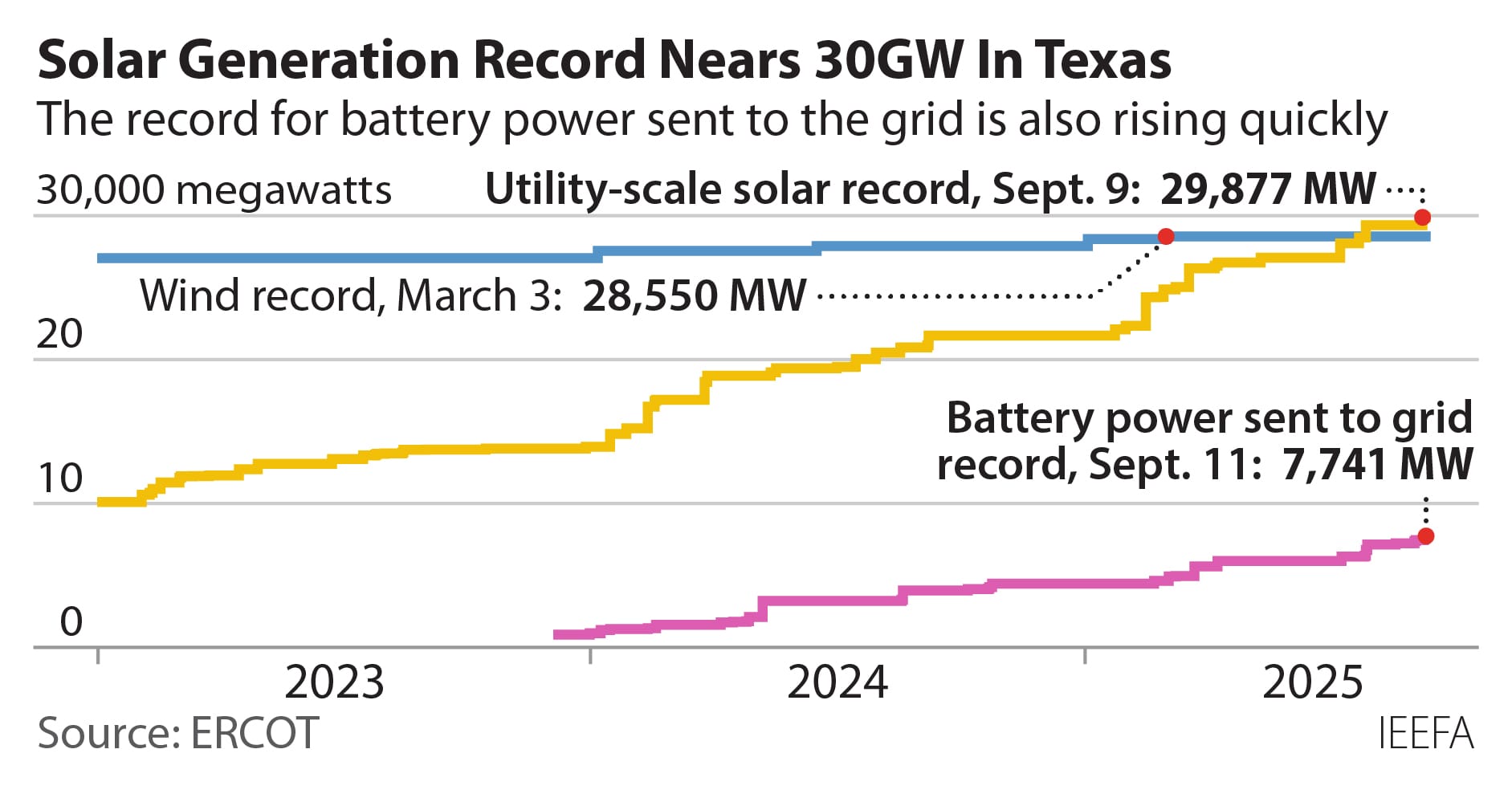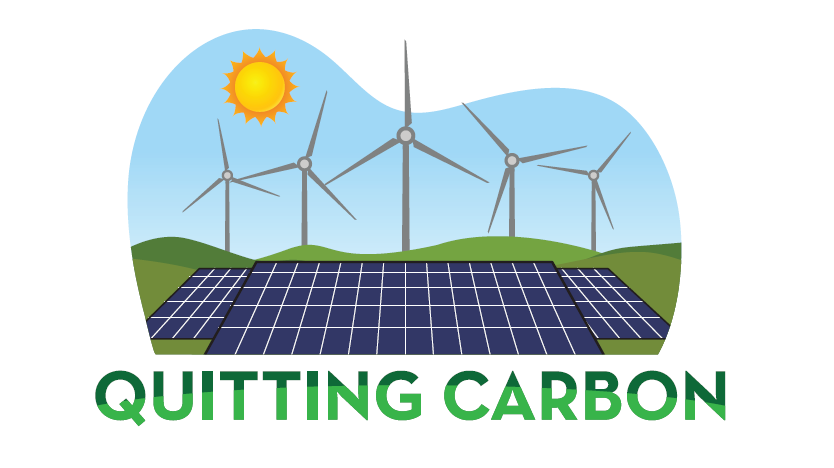What I’m reading: Oil majors and the EV supply chain, managed decline of gas grids, research roundup, and more

Quitting Carbon is a 100% subscriber-funded publication. To support my work, please consider becoming a paid subscriber or making a one-time donation.
Welcome back to another recap of highlights from what I’ve been reading. In the final section, I include a roundup of important recent reports and studies that I think are worthy of your attention.
Enjoy the weekend. And thanks, as always, for reading.
Major offshore wind conference canceled
Just how bad are things for the U.S. offshore wind industry?
I recently reached out to the American Clean Power Association (ACP) to ask about press registration for its flagship Offshore WINDPOWER conference.
Thinking the press registration was a formality, I had already booked flights and a hotel to cover the conference, which was to be held next month in Boston, for Quitting Carbon. I had reported from the same conference in Providence, Rhode Island, in 2022.
So, imagine my surprise when I received the following reply:
“Based on input from our members, we have decided not to hold the Offshore Windpower 2025 conference in Boston, Mass. on Oct. 7-8,” Jason Ryan, ACP’s deputy director for media relations, emailed me on September 9.
I had been eager to hear firsthand how the companies and states directly affected by the Trump administration’s war on the offshore wind industry planned to respond in the coming months.
Oil majors venture into the EV battery supply chain
Oil and gas companies are beginning to make investments in pieces of the supply chain for electric vehicle batteries.
An ExxonMobil subsidiary applied for a lithium royalty from the Arkansas Oil and Gas Commission in early June. (In November 2023, ExxonMobil announced plans to produce lithium sourced from deposits in southern Arkansas’ Smackover Formation by 2027, a target since pushed back to 2028.) The week before, the Commission had approved a 2.5% lithium royalty rate for a joint venture between Canada-based Standard Lithium and the Norwegian energy giant Equinor. ExxonMobil “signed a non-binding agreement to supply lithium from its proposed Arkansas project to South Korean EV battery maker SK On,” Reuters reported last June.

Chevron is entering the lithium business, too. “Chevron USA, a subsidiary of Chevron Corporation, became on Tuesday the latest oil major to enter the lithium market in the United States with the acquisition of lease rights to about 125,000 net acres in northeast Texas and southwest Arkansas,” Mining.com’s Cecilia Jamasmie reported on June 17.
ExxonMobil also plans to produce another key EV battery material, graphite. Under a deal announced last week, “the oil giant will buy a production facility, a research center and other assets from Superior Graphite, a privately held Chicago company, for an undisclosed price,” reported the New York Times’ Rebecca F. Elliott.
“We fundamentally see the demand for batteries and electric vehicles and, increasingly, in large-scale energy storage solutions increasing over the longer term,” Dave Andrew, Exxon’s vice president of new market development, told Elliott.
Winding down fossil gas grids responsibly
The managed decline of fossil fuel assets and infrastructure in the coming decades demands proactive, thoughtful policymaking.
For policymakers wondering how and where to begin such a process, there’s no better primer than an essay published this week by energy transition expert Jan Rosenow on “regulating gas grids when gas ends.” Rosenow is the leader of the energy program and professor of energy and climate policy at the University of Oxford’s Environmental Change Institute.
“Fortunately, some countries are taking decisive steps to proactively manage the gas grid phase-out,” writes Rosenow. One of the examples he cites – no surprise! – is Denmark.
“In Denmark, well-established heat planning mandates that gas and district heating networks do not overlap. The country has a decommissioning fund to cover the costs of removing gas supplies from homes and offers a scheme for free disconnections for private residences. By 2030 heating with fossil gas in Denmark will no longer be allowed.”
Rosenow also flags the rulemaking processes underway at the California Public Utilities Commission (CPUC) to manage the state’s transition away from fossil gas. Among the solutions he mentions is the targeted removal of local gas distribution grids – the subject of my February conversation with the Building Decarbonization Coalition’s Beckie Menten.
“The gas transition is going to be a major issue that the CPUC has to really grapple with,” Menten told me.
“A more coordinated and fair transition is possible,” concludes Rosenow.
“We need to move away from treating gas networks as permanent infrastructure and instead treat them as a temporary bridge to a climate-neutral future. By implementing clear policies for decommissioning, updating depreciation rules, and ensuring alignment with climate goals, we can ensure a just transition that protects consumers and avoids wasting billions on outdated fossil fuel infrastructure.”
Research roundup
With each day, another wave of reports and studies rolls in and floods my inbox. Here are some that are worth your time:
Geothermal projects can heat buildings in Alaska: Geothermal heating can work even in the extreme cold of Alaska, according to new research from the National Renewable Energy Laboratory (NREL).
“Published on June 17 in the journal Energy & Buildings, the feasibility study examined a 20-year period in which borehole thermal energy storage (BTES) – a system that stores heating or cooling energy underground – could reliably supply heating to two U.S. Department of Defense buildings in Fairbanks, Alaska,” wrote NREL’s Hannah Halusker.
“This paper demonstrates that even cold subsurface conditions – like those in Alaska, where 50% to 90% of the ground has permafrost – can be used for heating. A geothermal heat pump system can supply higher efficiency if we consider seasonal or storage-system-integrated operations,” said NREL geothermal research engineer Hyunjun Oh.
Here come grid-responsive heat pumps: Electric heat pumps are already three to five times more energy efficient than the fossil fuel-fired heating equipment they replace. The next generation of heat pumps may come equipped with batteries, too.
Carrier “has begun its first field trials of battery-enabled HVAC systems to test how they can store and shift energy when the grid needs it most,” the HVAC equipment manufacturer said in a Wednesday press statement.
“Through these trials, Carrier is assessing how its next-generation HVAC system – pairing more efficient variable-speed heat pumps with battery storage – can help reduce peak demand by shifting energy use from on-peak to off-peak periods, providing greater grid flexibility and resilience,” the company added.
(A hat tip to Regulatory Assistance Project’s Jaap Burger for flagging this news on Bluesky.)
Don’t expect gas turbines to get cheaper anytime soon: The Trump administration may want gas-fired power plants to be used to meet rising U.S. power demand but the reality on the ground says otherwise.
There is a global, multi-year backlog of the turbines used to generate power in gas-fired power plants. According to new research, don’t expect the recent price spikes for turbines to ease anytime soon.
“Demand for gas turbines is soaring – and the price of a combined-cycle gas turbine is too, new research finds. Projects slated for completion in 2030 or 2031 are now ‘routinely reporting costs of $2,000 per kilowatt or more,’ a jump of as much as 75% over near-term prices,” Latitude Media’s Lisa Martine Jenkins reported on Wednesday. The findings come from a new report co-published by GridLab, Energy Futures Group, Component Reliability Consultants, and Halcyon.
“As a point of comparison,” added Jenkins, “projects that are slated to come online in the coming years reported costs of between $1,116 per kW and $1,427 per kW.”
So, why don’t the largest gas turbine manufacturers – GE Vernova, Mitsubishi Heavy Industries, and Siemens Energy – simply make more turbines?
Heatmap’s Matthew Zeitlin reported earlier this month on the global gas “turbine crisis,” adding context to reporting from Bloomberg that found Mitsubishi Heavy Industries “aims to double its capacity to build gas turbines over the next two years.”
But ramping up their manufacturing capacity quickly could prove challenging for the turbine makers. “All in all, if more machines can be manufactured, more skilled and engineering labor will be needed. This is the part that really complicates the actual timeline,” Bobby Noble, senior program manager of gas turbine research and development at the Electric Power Research Institute, told Utility Dive’s Diana DiGangi.
Offshore wind saves money over gas: The Trump administration says one of the reasons why it is justified in shutting down the offshore wind industry is that power from the projects is more expensive than from its preferred fuel, natural gas. Not so, according to two new studies.
“If the 3.5 GW [gigawatts] of wind energy projects currently contracted offshore New England had been operational last winter, it could have offset the surge in natural gas prices that season and saved ratepayers a total of $400 million on their energy bills,” wrote Utility Dive’s DiGangi last month about a report from Daymark Energy Advisors.
Similarly, CT Mirror’s John Moritz reported last week that “Electric customers across New England could be saddled with up to $500 million in additional annual supply costs if work does not resume on the nearly-completed Revolution Wind project, officials with Connecticut’s Department of Energy and Environmental Protection said.”
Solar + storage continues to set records in Texas: The Trump administration is pushing fossil gas power plants as the primary solution to quickly supply new power to the grid; despite the challenges I noted above. What is being deployed quickly? Solar and batteries.
And right now, no place in the U.S. better highlights that dynamic than Texas. New analysis from the Institute for Energy Economics and Financial Analysis (IEEFA) does a good job of capturing the Texas solar and storage boom.

“Solar set a new ERCOT record (last Tuesday) on Sept. 9, generating almost half of total demand in the fast-growing Texas electricity market while providing more than 40% of the state’s electricity for seven straight hours, from 9 a.m. to 4 p.m.,” wrote IEEFA’s Dennis Wamsted and Seth Feaster on Wednesday.
“The results clearly show that if you build it, solar will perform,” they added.
Battery energy storage systems have set four discharge records this month.
“The latest occurred last Thursday, Sept. 11, sending 7,741 MW, or 10.6% of total power demand back into the grid in the early evening—and preventing the need for a comparable amount of fossil fuel generation,” wrote Wamsted and Feaster.
Bonus 1: Why are you paying so much for electricity?
One answer, courtesy of New Yorker cartoonist Paul Noth:

Bonus 2: When I almost met Robert Redford
In the spring of 2019, the energy think tank RMI invited me to attend an e-Lab Accelerator project bootcamp it was convening at the Sundance Mountain Resort in Utah. I reported on the multi-day event for Greentech Media.
I was embedded with a team of experts assembled by the Sacramento Municipal Utility District to figure out how to integrate electrification into its existing energy efficiency programs for low-income households. Another team included the founders of the non-profit HEET, which is now partnering with utilities to launch thermal energy network pilots in Massachusetts.
I'll never forget the setting of the resort at the foot of Mount Timpanogos in the Wasatch Range.

The Sundance Mountain Resort. Credit: Justin Gerdes.
And I'll never forget when Robert Redford showed up.
All of the project teams were busy in brainstorming sessions, writing on whiteboards. And then someone noticed the then-82-year-old Redford standing on the deck outside the room. Which sent every woman in the room swooning.
I remember him coming into the room on a break, reading some of the posters and whiteboards and chatting with a few of the participants – alas, I was not one of them.
I don't know how the Sundance Resort was selected to host the e-Lab Accelerator event. Perhaps it had something to do with Redford's lifelong environmental activism and commitment to conservation at the resort. But it seemed clear that the actor, director, independent film champion, and environmentalist cared about the clean energy transition, too.




